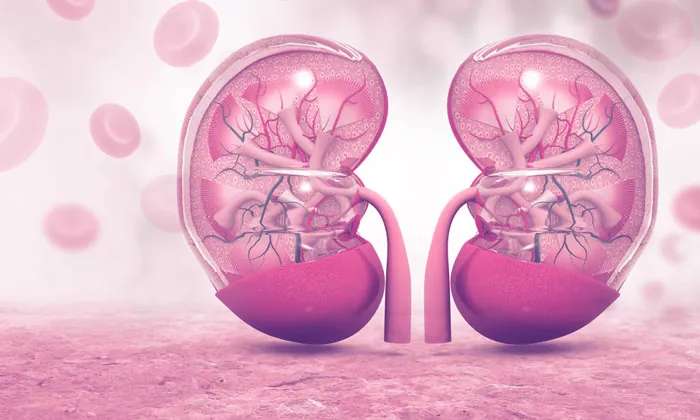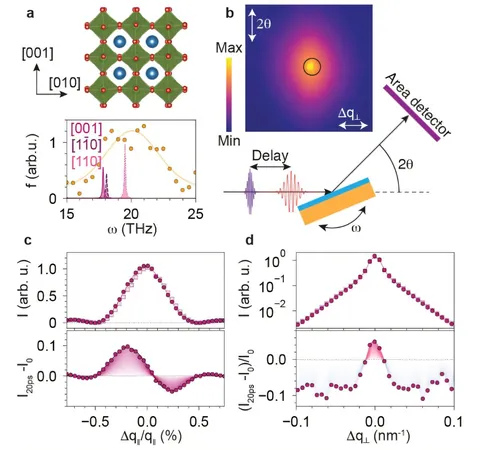
Revolutionary Lab-Grown Kidneys Mimic Real Functionality in Groundbreaking Study
2025-09-22
Author: Amelia
USC Scientists Achieve Major Breakthrough in Kidney Research
In a stunning advancement, USC Stem Cell researchers have created the most sophisticated lab-grown kidney structures to date, dubbed ‘assembloids.’ These innovative constructs not only combine essential components but also mature and function akin to real kidneys, unlocking new avenues for studying complex kidney diseases.
The research team’s latest findings, published in the journal Cell Stem Cell, detail their success in developing mouse and human synthetic kidneys that are more mature and intricate than ever before. According to Zhongwei Li, an Associate Professor of Medicine, this breakthrough marks a transformative step in generating precise models for kidney disease—a condition affecting one in seven adults. Moreover, it brings hope for over 100,000 patients in the U.S. awaiting kidney transplants—the only remedy for end-stage kidney disease.
From Organoids to Assembloids: A New Era in Kidney Development
Previously, the Li Lab crafted organoids featuring nephrons, the kidney’s filtration units, alongside models mimicking the kidney’s collecting ducts. Their latest feat involved combining these elements to create assembloids, a leap forward in kidney research.
The researchers optimized the growth conditions for both mouse and human assembloids in the lab and then transplanted these structures into living mice. This environment allowed the assembloids to further mature, developing connective tissues and blood vessels.
‘By fostering the assembloids in a living environment, we utilized the kidney progenitor cells' innate ability to self-assemble,’ Li commented, highlighting the significance of this process in the quest to construct fully functional synthetic kidneys.
Demonstrating Kidney-Like Functions
Both mouse and human assembloids displayed impressive kidney-like functions, showing abilities such as blood filtration, protein absorption—including albumin—hormone secretion, and early indications of urine production.
Surpassing Embryonic Development
Unlike previous kidney organoids, which only matured to an embryonic stage, the mouse assembloids reached maturity comparable to that of a newborn mouse kidney, based on gene activity and other benchmarks. The human assembloids also surpassed the embryonic level, although precise maturity remains ambiguous without newborn human kidney samples for reference.
A New Frontier in Disease Modeling
This study also reveals the potential of assembloids as high-fidelity models for complex human kidney diseases. Researchers successfully grew human assembloids from cells with a single genetic mutation that leads to autosomal dominant polycystic kidney disease (ADPKD). These diseased assembloids exhibited significant kidney cysts when implanted in living mice, along with advanced features like inflammation and fibrosis—conditions previously unmodeled in laboratory settings.
Li stated, ‘Our study provides a groundbreaking tool for exploring a wide range of complex kidney diseases, laying a robust foundation for engineering functional synthetic kidneys as lifesaving solutions for patients in need.’









 Brasil (PT)
Brasil (PT)
 Canada (EN)
Canada (EN)
 Chile (ES)
Chile (ES)
 Česko (CS)
Česko (CS)
 대한민국 (KO)
대한민국 (KO)
 España (ES)
España (ES)
 France (FR)
France (FR)
 Hong Kong (EN)
Hong Kong (EN)
 Italia (IT)
Italia (IT)
 日本 (JA)
日本 (JA)
 Magyarország (HU)
Magyarország (HU)
 Norge (NO)
Norge (NO)
 Polska (PL)
Polska (PL)
 Schweiz (DE)
Schweiz (DE)
 Singapore (EN)
Singapore (EN)
 Sverige (SV)
Sverige (SV)
 Suomi (FI)
Suomi (FI)
 Türkiye (TR)
Türkiye (TR)
 الإمارات العربية المتحدة (AR)
الإمارات العربية المتحدة (AR)